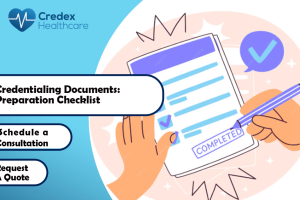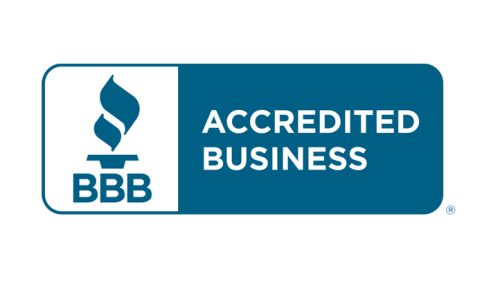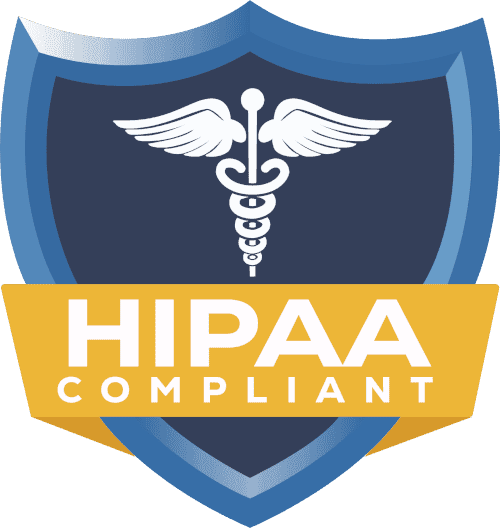How Do I Get Credentialed with Insurance Companies? Credex Healthcare guide

Credentialing with an insurance provider is one of the top steps a healthcare provider can take, especially prior to engaging patients. Credentialing ensures providers are qualified, properly licensed, and meet all insurance-mandated requirements.
Beyond legal and compliance needs, credentialing is essential for billing and expanding your patient base. Healthcare is increasingly becoming insurance-based, where providers must be identified by insurers to be included in their networks to provide services to covered patients.
Credentialing is not just about forms and record keeping; it involves schooling, training, licences, experience, and certification. Insurance companies want to be certain that the providers they include in their networks are of the highest quality.
Credentialing is needed in order to be able to bill the insurance companies, and uninsured patients can go to a provider who is already credentialed. It might be a complicated process, but it is an essential element of establishing your practice and developing trust among patients and payers.
Credentialing also helps you establish professional credibility. Patients usually verify that their provider is within the scope of their insurance cover, and insurance verifies current credentials before processing claims.
Credentialing is also a legal prerequisite. Well, in most states, you can charge Medicaid or Medicare. It emphasises the importance of punctual and accurate credentialing even more.
Who Needs to Get Credentialed?
Credentialing must be done on all types of providers. It covers individual practitioners, group practices, behavioral health providers, physical therapists, dentists, and any other licensed professionals who bill insurance companies.
Even urgent care centres, as well as clinics, must undergo this procedure. Insurance companies require you to be credentialed by them, regardless of where you practise or your specialisation, to use your services.
Even practitioners with advanced degrees and roles such as nurse practitioners (NP) and physician assistants (PAs) need to be credentialed. It is known that imaging centres, laboratories, hospitals, and behavioral health facilities are among those that fall under this credentialing requirement. Regardless of your role in patient care, credentialing is necessary if you are likely to work with insurance reimbursement.
Step-by-Step Guide to Getting Credentialed
To start your credentialing journey, you should obtain your National Provider Identifier (NPI). It is an identification number issued by the National Plan and Provider Enumeration System (NPPES) to healthcare providers. You can apply online, and your NPI is used in every transaction with payers.
Once you have your NPI, it is important to ensure proper licensing in your state and that all credentials are current. These include your professional licence, board certifications, and malpractice insurance.
Then, you must complete the registration process by visiting CAQH ProView. It is recognised as a universal application platform used by many insurance companies. The Council for Affordable Quality Healthcare is also known as CAQH.
How does it facilitate?
It facilitates the storage of their information in a central repository. This profile must be completed thoroughly and reviewed regularly. When you gain credentialing with an insurance company, they will also examine your information through CAQH. You should regularly check your CAQH profile to ensure it remains active.
After registering with CAQH, you must submit enrollment applications to each payer. It occurs after enrolling with CAQH. Every payer can be different in form, portal, and requirements. Aetna, UnitedHealth Care, Blue Cross Blue Shield, Cigna, and Humana are among the most common insurance companies.
Such applications would normally request your practice information. They would also go for medical qualifications, insurance, and contact information. It always happens when one submits each of the sections. Then, later resubmission to avoid delays is important.
When applications are submitted, it is your turn to follow up and keep up with the process. Insurance companies may demand any further evaluation or update in your details, and non-response will slow up your acceptance. Well, the usual wait is 60 to 120 days for credentialing to be completed.
At this stage, it is convenient to keep all the submissions, code numbers, and contact information with insurance representatives. Consider using credentialing software or spreadsheets to stay organized, supplemented by follow-up calls or emails every 2–3 weeks.
Required Documents for Credentialing
Required documents include your NPI; medical license; DEA registration; certificate of malpractice insurance; board certifications; CV or résumé; W-9 form; and a government-issued ID. Existing or expired documents are one of the major causes of delays in applications. It is done smoother when you have your paperwork ready beforehand.
Common Challenges in the Credentialing Process
Most of the providers encounter some of the following problems in the process of credentialing. The inability to fill out a CAQH profile or sign the CAQH profile is among the common problems.
The other issues are the lack of documents, loss in communication with payers, or just failure to follow up with the application. Every single mistake may cause big delays. Providers are left with no choice but to be aggressive and thorough during this process.
The second critical obstacle is payer-specific criteria. Other insurance companies require special preparations, such as documents notarized or visits to the location. Background checks or verification of a license are also a slow approving procedure. It is good to address applications on time and ensure they are not incomplete.
How Long Does the Credentialing Process Take?
Credentialing timelines vary depending on payer processes, provider type, and application completeness; thus, the exact duration is hard to predict. The length of the credentialing process is between 60 to 120 days.
Nevertheless, practice can help correct the schedule in case of errors or missing documentation. The most effective way to ensure you are ready to see patients once your practice opens is by planning early and starting the process as soon as possible.
Other payers provide accelerated credentialing processes, but only to the degree of specialty or shortage of providers. Ask at all times whether there is a fast track. Remember, the timeline can take months, even in the case when you are re-credentialing.
Can I Get Help with Credentialing?
Due to the intricacy of the credentialing process, a lot of providers decide to employ credentialing firms. Such firms major on the control of the entire process, i.e., NPI registration and final payer approval.
A credentialing service can save you time, reduce errors, and ensure prompt approval. When choosing a credentialing company, look for experience, transparency, and an understanding of your specialty. An effective credentialing partner will keep you updated throughout the process and guide you every step of the way.
Also, credentialing professionals keep themselves aware of payer requirements that continuously change. They are able to do re-credentialing, monitor the status of the application, and correct any errors, which otherwise would have remained invisible. When you outsource, you gain back time in order to allow you to concentrate on what is most important to your patients.
Credentialing vs. Contracting
It is also good to know the distinction between credentialing and contracting. Credentialing is a practice that validates your sponsorships and approvals, and contracting is when an arrangement of agreement is made between a payer. It is something you signed so that it makes you are in-network. Credentialing should also be done before you get into any contract. In the absence of the two steps, you cannot make insurance claims and get payments.
Credentialing is the background check, and contracting is the job offer. It is upon passing the credentialing stage that the payer will offer a contract with agreed reimbursement terms, billing policies, and effective dates.
Other Common Questions
Many wonder if billing insurance is permitted during credentialing. In most cases, it is not—insurers typically require active network status before reimbursement. Insurance companies will not pay you when you are not in their network. It is because of credentialing problems. Some payers accept retroactive billing, but they are not always guaranteed, and it is not recommended to rely on it. Probably the better approach is to wait until you have your contract and start the billing date.
In case your practice has several locations, you might be required to complete individual credentialing applications for each of your practice locations. It is according to the policies of the payer. Remember to clearly state the list of practice addresses in your application, since this might be confusing. Likewise, you are required to update payers in case you alter your practice address or modify your license.
It is worth hiring a person to do credentialing on your behalf. Credentialing companies are knowledgeable about the payer processes, requirements for documents, and frequent problems. They are able to follow up on the applications, keep them, and can tell that every application has been put where it should have been. The benefits of outsourcing credentialing are that providers will not be stressed with credentialing paperwork.
Final Thoughts: Start the Credentialing Process the Right Way
In summary, credentialing in insurance companies is a vital process for healthcare providers. It helps you meet the expectations of payers and enables your services to be reimbursed. Although the process may seem overwhelming, it can be managed effectively by following a step-by-step guide and staying organised.
You can carefully plan, document the right way, and, in case you need some assistance, employ credentialing professionals and go through the process easily without any difficulties getting accepted as an in-network provider, and start treating your patients.
To make sure you will not encounter any delays and start your practice on the right foot, it is essential to begin early and keep track of the details with Credex Healthcare.
FAQs About Insurance Credentialing
What is provider insurance credentialing?
Insurance credentialing is the process through which insurance companies certify their provider in terms of qualifications, licenses, and background, thus determining their membership in the network.
What is the initial step to the credentialing process?
Begin by registering your own NPI, building the documentation, and making a CAQH profile, and then afterwards, you can start applying to payers.
How much time does the process of being credentialed with insurance companies take?
Its average payer-dependent time frame is between 60 to 120 days, depending on the availability of the documentation.
Do I have to get credentialed with every insurance company by name?
Yes, it is true. Every payer is different, but CAQH simplifies certain forms of data exchange.
Can another person do credentialing on my behalf?
Yes, a lot of the providers enlist companies that perform professional credentialing services to decrease the timeframes of delays.
Is post-ethical credentialing possible?
There is the practice of retroactive billing within some payers, though this may not always be the case. Check it out ahead of time with every payer.
Should I renew my credentialing information?
Yes, you should. It also updates your documents and profile on CAQH in response to address, license, or ownership changes.



















